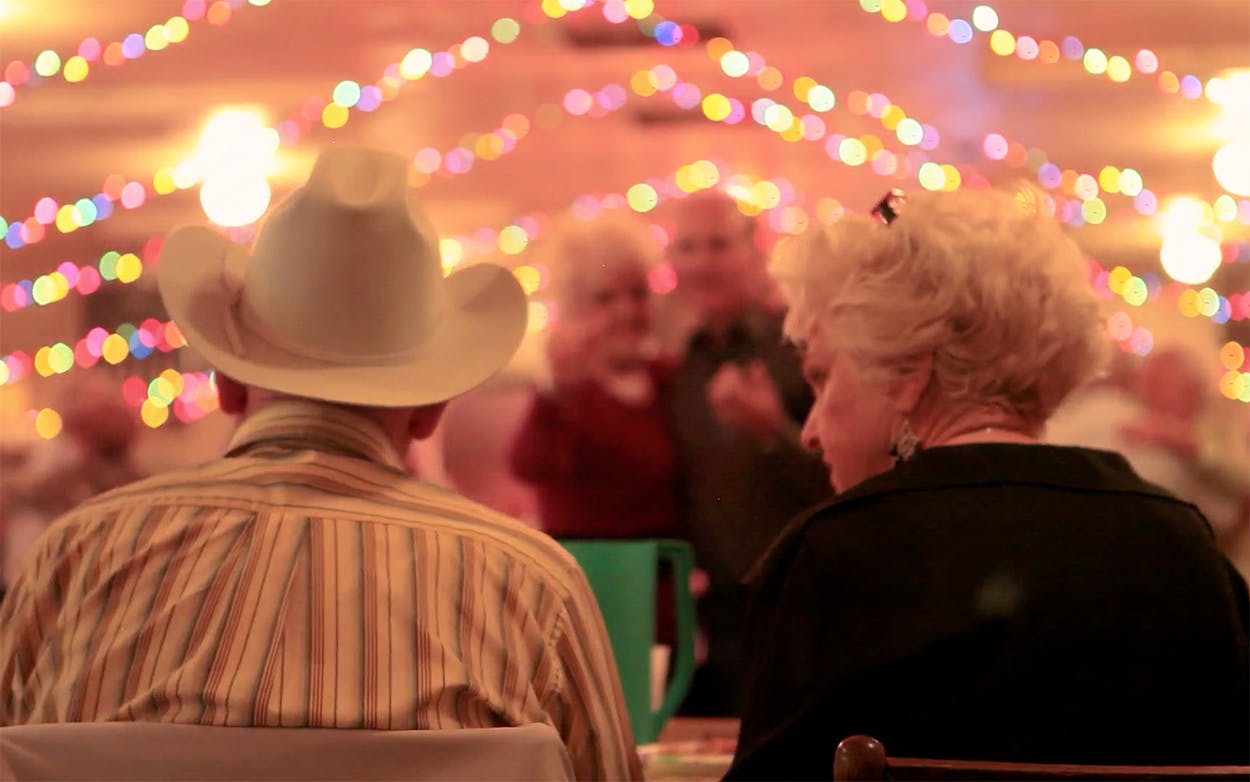There were once more than one thousand dance halls in small Texas towns, from Temple to Anhalt. Today, less than half of them are still open. Those that remain provide a beloved space for elderly locals to reminisce, develop new friendships, and, of course, dance the polka. In Night at the Dance, filmmaker Annie Silverstein, then a student in the Department of Radio-Television-Film at the Moody College of Communication at UT Austin, chronicled the scene and the dancers at Sefcik Dance Hall in Seaton. Watch the short film here, and read more about Silverstein’s process below.
Texas Monthly: How and when did you first come across the dance halls?
Annie Silverstein: I was in my first semester in the grad program at UT, and one of our assignments was to make a short documentary. I’d just moved to Austin and wanted to use the assignment as a way to explore my new home and connect with the place and people. I came across an article in Texas Monthly about dance halls written by John Spong. It piqued my interest and I reached out to Steve Dean, cofounder of Texas Dance Hall Preservation, who was a walking encyclopedia about Texas music, dance halls, BBQ, and graveyards. An incredibly passionate guy, he also had a way of taking new transplants under his wing and showing them the ropes. After I told him I was interested in making a documentary, we spent several weekends driving down the backroads of Texas, exploring different dance halls, and eating BBQ on the way home. One Sunday night, we drove out to Sefcik Hall and I immediately knew that was where I wanted to focus my attention.
TM: Why did you decide to make a documentary about them? What interested you?
AS: I found it very moving—the elderly folks who still go there each Sunday to wax the floors and dance the polka, the absence of young people, and the sense that Sefcik Hall will likely pass away with its owner. It has a mix of melancholy, beauty, humor, and bliss. Many of the dancers at Sefcik have already lost their partners, and their kids are long gone, but they still show up every Sunday to dance. For me, watching them spend their last days dancing was incredibly life-affirming.
TM: How did you decide to focus on Sefcik Hall?
AS: I was interested in how tightly interwoven the people are with the place. The house where Alice [the owner] was born is directly next to the dance hall her parents built, and on the other side of the dance hall is the graveyard where many of the folks from town are buried. Some of the dancers go visit the grave of their husband or wife before walking over to the hall to dance polka every Sunday, and maybe even find a new partner.
TM: I’d love to hear your impressions from the first time you went to Sefcik Hall.
AS: The very first time I went, I interviewed Betty, George, and Willa in the parking lot before we headed up to the dance. This was research footage, but the interview ended up in the film. Their love of dancing was totally infectious. They just lit up talking about it. Willa and George met at the hall after each losing their partners. They were glowing, giddy as kids. And then Betty, who I adored, talked about hoping to find new love at the dance hall. It was as if I was talking to a group of teens outside a high school dance. To have that energy, vitality, and hope after the losses they’ve experienced through life was beautiful.
TM: What were you struck by there?
AS: I was always struck by how steep the staircase is leading up to the dance floor. It was nuts. Sometimes it would take ten minutes for someone to walk up them. Their will to dance was amazing.
TM: How did you meet the characters you feature in the film?
AS: It was easy to meet them. They were all so friendly and excited to share about their lives and love of dancing.
TM: Is it always the same folks dancing there?
AS: Mainly the same group of folks would go every Sunday. If people were missing, it might mean they were sick or weren’t doing well health-wise.
TM: How far do people travel to attend the dance?
AS: People came from Seaton, Temple, and some surrounding areas. It was a mix—some folks grew up in and around Seaton, others grew up in towns nearby or had been married to someone from the community.
TM: Do the same band members play every week?
AS: No, they would switch it up. My favorite nights were when Alice would play the saxophone with her polka band. She’s fierce!
TM: What was the reception to the film like? Did you hear from the people featured in it? What did they think?
AS: The feedback I got was really positive. I was told the film moved Alice to tears. I wasn’t there to see it, but her son left a message for me. Alice is a tough cookie—she tends the bar under the dance hall during the week and keeps a bat under the counter to use in case “anyone causes trouble.” So her reaction meant a lot to me, and I was relieved she wouldn’t come after me with a bat the next time I saw her.
TM: Do you ever go back to Sefcik Hall now?
AS: You know, I haven’t been back in years. I’ve been immersed with other film projects, working, and parenting. But I’d really love to get back there soon and take my husband for a spin around the room.
This interview has been edited for clarity and length.
- More About:
- Film & TV
- Filmmaker
- Documentary
- Temple






